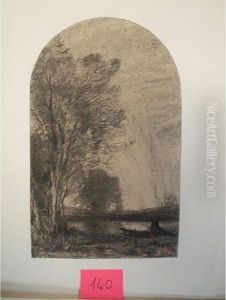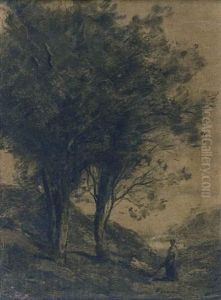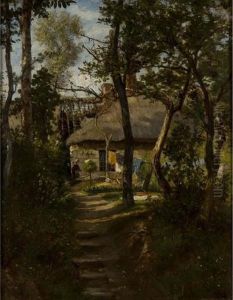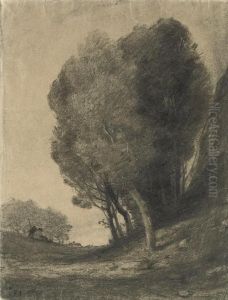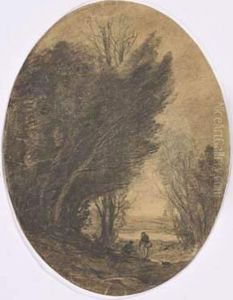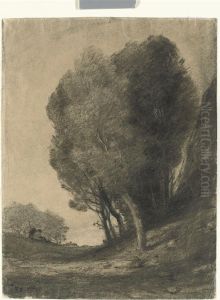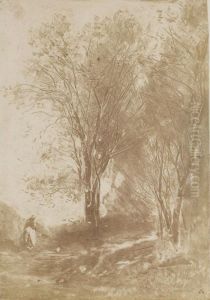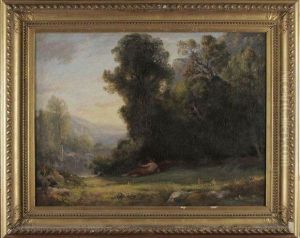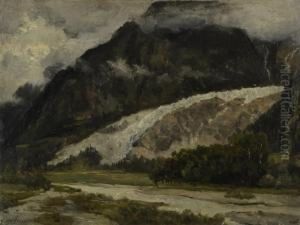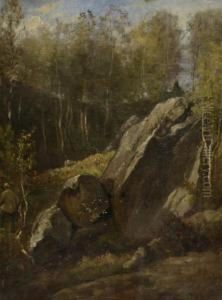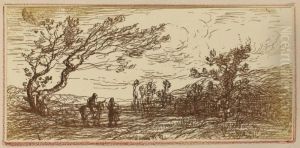Constant Dutilleux Paintings
Constant Dutilleux was a French painter associated with the Barbizon school, an influential group of artists in the mid-19th century who moved away from the formalities of academic painting to embrace a more naturalistic depiction of landscape and rural life. Born on May 21, 1807, in Douai, France, Dutilleux initially trained under his father, a miniaturist and military painter, before moving to Paris to further his studies. His early work was influenced by the Romantic movement, characterized by a dramatic use of color and light to convey emotion and atmosphere.
While in Paris, Dutilleux was exposed to the work of English landscape painters like Constable and Turner, whose techniques would have a lasting impact on his approach to landscape painting. Despite this influence, Dutilleux never achieved significant recognition in Paris and returned to his hometown, where he developed a unique style that combined elements of Romanticism with the emerging Barbizon ethos of painting nature from life.
Dutilleux's landscapes are known for their poetic quality, often featuring atmospheric effects and a soft, subdued palette. He was particularly adept at capturing the changing light of dawn and dusk, imbuing his scenes with a sense of tranquility and timelessness. Unlike some of his Barbizon contemporaries who focused on the forests of Fontainebleau, Dutilleux often depicted the marshes and rivers of the Artois and Picardy regions, showcasing the natural beauty of his native northern France.
Throughout his career, Dutilleux struggled with financial difficulties and remained relatively obscure compared to other Barbizon painters like Corot and Millet. However, his work was admired by a small circle of collectors and artists, including the famous French poet and art critic Charles Baudelaire, who was a staunch supporter.
Dutilleux's contribution to the landscape genre and the Barbizon school was not widely recognized until after his death in Arras, France, on August 24, 1865. In recent years, his paintings have gained more attention, celebrated for their lyrical quality and the artist's sensitive observation of nature. Today, Dutilleux is regarded as an important figure in the transition from Romantic landscape painting to the more naturalistic approach that would dominate the late 19th century.
